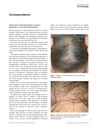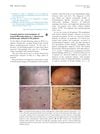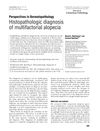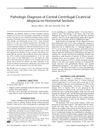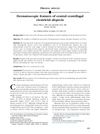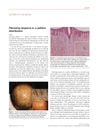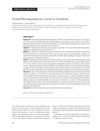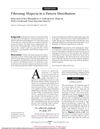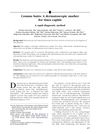Fibrosing Alopecia in a Pattern Distribution in 16 African-Descent and Hispanic Female Patients: A Challenging Diagnosis
January 2019
in “
Skin appendage disorders
”
Fibrosing Alopecia in a Pattern Distribution FAPD scarring alopecia perifollicular erythema perifollicular scaling hair fiber diameters lichenoid perifollicular infiltrate follicular miniaturization pattern hair loss scarring hair loss redness around hair follicles scaling around hair follicles hair thickness inflammation around hair follicles shrinkage of hair follicles pattern baldness
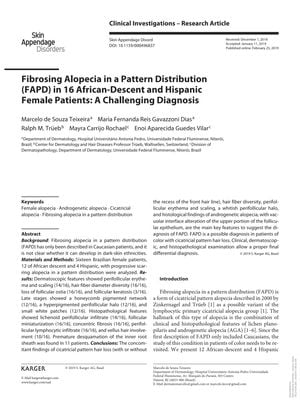
TLDR FAPD is a possible diagnosis for hair loss in patients of color and requires multiple evaluations for accurate diagnosis.
The study examined Fibrosing Alopecia in a Pattern Distribution (FAPD) in 16 Brazilian female patients, including 12 of African descent and 4 Hispanic, aged 29 to 75 years. These patients showed signs of scarring alopecia with dermatoscopic features such as perifollicular erythema and scaling, and diverse hair fiber diameters. Histopathological examination revealed lichenoid perifollicular infiltrate and follicular miniaturization among other features. The research concluded that FAPD is a potential diagnosis for patients of color with pattern hair loss, noting that clinical, dermatoscopic, and histopathological evaluations are essential for accurate diagnosis. This study challenged the notion that FAPD was exclusive to Caucasian patients, indicating its occurrence in patients of color as well.
